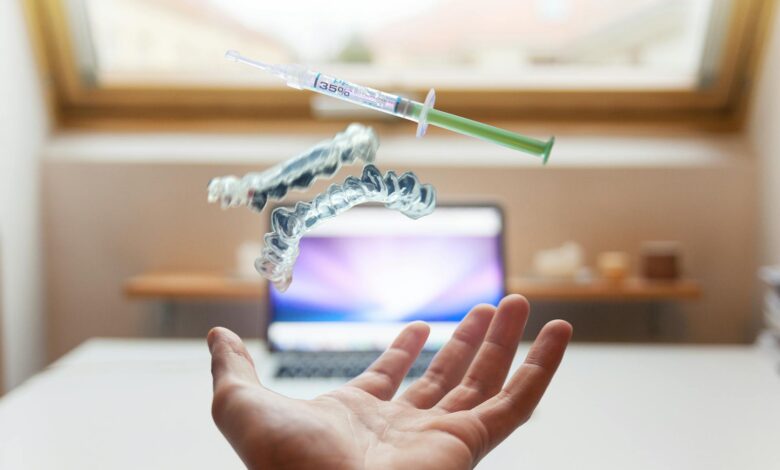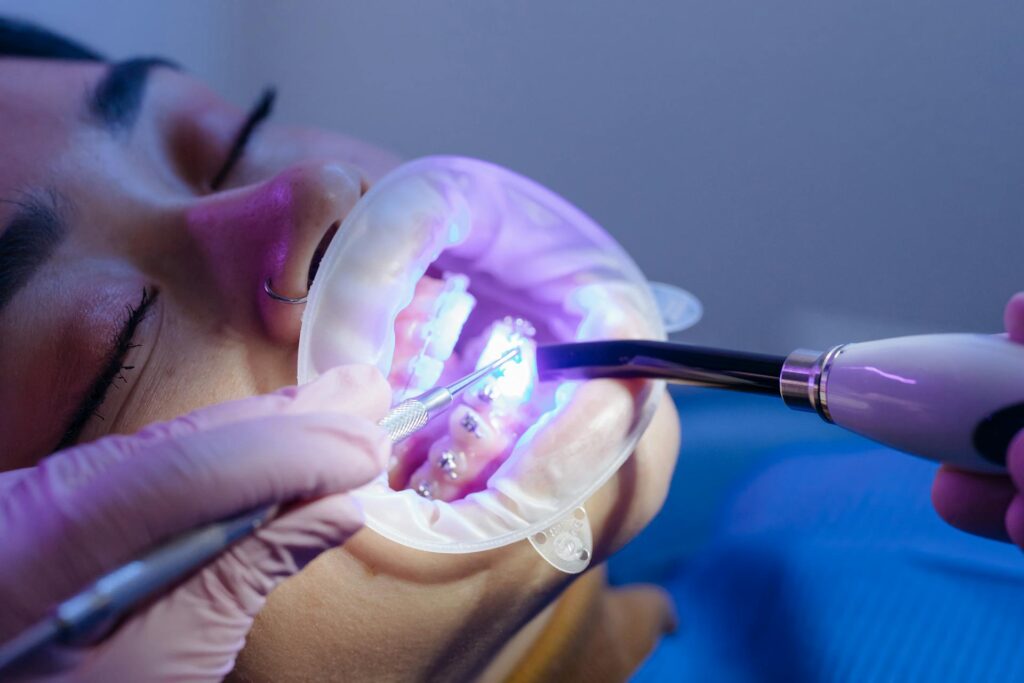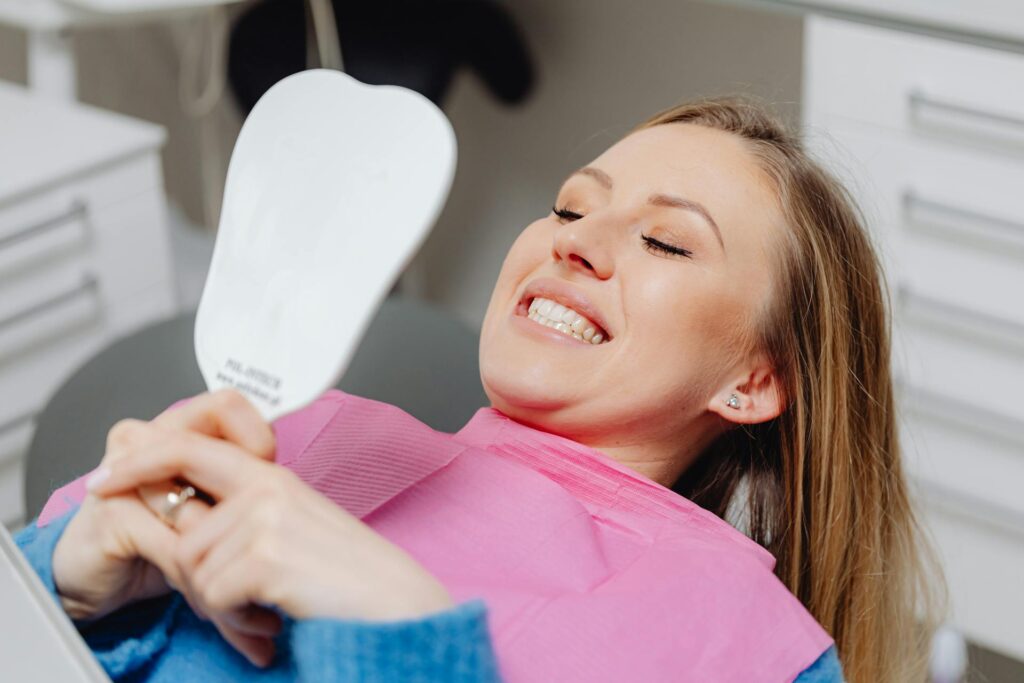
If you’ve ever wondered how to remove braces at home, you’re not alone. Many people grow impatient or uncomfortable during orthodontic treatment and start looking for shortcuts. But here’s the truth: removing braces on your own is unsafe and can cause permanent damage to your teeth and gums.
In this guide, we’ll explain why you should never try to remove braces yourself, what can go wrong, and what safe alternatives exist. You’ll also learn how orthodontists remove braces professionally and what to expect during aftercare.
Is It Possible to Remove Braces at Home?
Technically speaking, yes — but it’s a terrible idea.
Braces are attached using strong dental adhesive and specialized tools. While you might find stories online or videos showing “DIY braces removal,” doing so without professional equipment or expertise can seriously harm your teeth.
The brackets, wires, and cement are designed to stay in place until your orthodontist determines that your teeth are properly aligned. Removing them early — or incorrectly — can undo years of progress in seconds.
So, while it might be possible, it’s never safe or advisable.
Why People Search for How to Remove Braces at Home
There are a few understandable reasons why people consider taking braces off themselves:
- Cost concerns: Orthodontic treatment can be expensive, and some patients fear additional fees for visits or adjustments.
- Discomfort or pain: Tight wires or sharp brackets can irritate cheeks and gums.
- Impatience: Treatment can take months or years, and some people simply want their braces gone.
- Aesthetic reasons: Events like weddings or photoshoots can tempt patients to remove braces early.
- Broken or loose braces: When brackets break, it’s tempting to “fix” or remove them temporarily at home.
While these reasons are valid, none justify the risks involved. Orthodontists understand these frustrations and can often offer quick, affordable solutions.
The Dangers and Risks of Removing Braces at Home
Trying to remove braces on your own can cause serious — even irreversible — harm. Here are the biggest risks:
- Tooth Damage: Brackets are bonded using strong dental cement. Pulling or prying them off can chip, crack, or break your teeth.
- Gum Injury: Improvised tools can slip and cut your gums, leading to pain or infection.
- Infection: Open wounds in your mouth can quickly become infected, especially without sterilized instruments.
- Misalignment Relapse: Removing braces early means your teeth can shift back to their original positions — undoing months or years of progress.
- Pain and Sensitivity: Teeth become tender after braces are removed. Doing it incorrectly increases the risk of sensitivity or nerve pain.
- Costly Repairs: Fixing self-inflicted damage can cost far more than a regular orthodontic visit.
In short, DIY braces removal is dangerous, painful, and expensive in the long run.

Why Only Orthodontists Should Remove Braces
Orthodontists are dental specialists trained to move teeth safely and precisely. They use professional tools and techniques to remove braces without damaging enamel or gums.
Here’s what an orthodontist ensures during removal:
- Safe debonding: Each bracket is gently detached using a special orthodontic plier that breaks the adhesive bond safely.
- Thorough cleaning: Residual cement is polished off carefully without scratching your enamel.
- Bite check: Your orthodontist examines how your teeth fit together to ensure proper alignment.
- Immediate retainer fitting: Retainers are usually provided right after removal to maintain your new smile.
This process is painless, quick, and completely safe when done professionally.
What to Do If Your Braces Are Causing Pain or Problems
If your braces are uncomfortable, there are safe, home-based relief methods — none of which involve removal. Try these instead:
- Orthodontic wax: Apply it to sharp brackets or wires to prevent irritation.
- Pain relief medication: Use over-the-counter pain relievers (as directed) for mild discomfort after adjustments.
- Saltwater rinse: Gargle warm saltwater to soothe irritated gums.
- Avoid hard foods: Crunchy or sticky foods can bend wires or break brackets.
- Contact your orthodontist: Most offices can schedule emergency visits or virtual consultations for discomfort or loose wires.
Remember: discomfort doesn’t mean you need to remove your braces — it means your teeth are moving as planned.
Safe Alternatives Instead of Removing Braces at Home

If you’re struggling with your braces, consider these safer options:
- Schedule an orthodontic check-up: Explain your discomfort. Small adjustments can make a big difference.
- Ask about payment plans: Many clinics offer flexible financing if cost is a concern.
- Explore clear aligners: Invisalign or other systems may be suitable if you prefer a removable, nearly invisible alternative.
- Request a retainer transition plan: If your teeth are almost aligned, your orthodontist may consider switching to retainers earlier.
- Temporary fixes: Broken brackets or loose wires can often be stabilized until your appointment — never remove them yourself.
Your orthodontist’s goal is the same as yours: a healthy, beautiful smile. They’ll help you get there safely.
How Braces Are Removed Professionally
Here’s what actually happens during a professional braces removal appointment:
- Bracket Debonding: Using a special plier, your orthodontist gently squeezes each bracket to release the adhesive bond.
- Wire Removal: The archwire and elastic ties are removed.
- Cement Cleaning: Any remaining bonding material is polished off with a dental handpiece, leaving your enamel smooth.
- Final Examination: Your orthodontist checks for any remaining residue and verifies your bite alignment.
- Retainer Fitting: Impressions or digital scans are taken to create a custom retainer. Some retainers are fitted immediately.
- Smile Reveal: You’ll see your new, straight teeth for the first time — pain-free and safely.
This process usually takes 20–30 minutes and does not require anesthesia. Most patients describe it as “odd but not painful.”
Aftercare and Retainers
After braces removal, your teeth and gums need some time to adjust. Here’s how to care for your new smile:
- Wear your retainer as directed: This prevents your teeth from shifting back.
- Maintain good oral hygiene: Brush and floss gently but thoroughly.
- Avoid very hard or sticky foods for a few days.
- Visit your orthodontist regularly: Retainer checks are just as important as braces adjustments.
- Whitening (optional): Wait a few weeks before whitening your teeth to allow enamel recovery.
Remember: your new smile is an investment. Proper aftercare keeps it perfect for life.
FAQ — Common Questions About Braces Removal
1. Can I cut the wire at home if it’s poking my cheek?
You can carefully trim a very small loose wire with sanitized nail clippers if it’s urgent, but call your orthodontist immediately afterward. Never attempt to remove or replace wires yourself.
2. How long does braces removal take?
Typically 20–30 minutes for both arches. The process is quick and painless.
3. Will removing braces hurt?
You might feel slight pressure, but it shouldn’t be painful. Any mild tenderness fades within a day.
4. What happens if I remove one bracket myself?
You risk enamel damage, misalignment, and possible infection. Always let your orthodontist handle repairs.
5. Can I switch to clear aligners before braces removal?
Yes, in some cases. Your orthodontist can evaluate your progress and guide the transition safely.
6. Why do my teeth feel loose after removal?
This is normal — teeth need time to stabilize. Wearing your retainer as prescribed helps them settle properly.
7. What if I can’t afford another orthodontic visit?
Ask your clinic about payment plans or community dental programs. Never try to remove braces at home to save money.
8. Can I eat normally right after braces removal?
Yes, but start with soft foods for the first few days as your teeth may be sensitive.
Conclusion
If you’ve been searching how to remove braces at home, the best advice is simple: don’t do it. While the idea might seem tempting to save money or end discomfort, the risks — from tooth damage to infection — are far greater than any short-term relief.
Instead, trust your orthodontist. They have the training, tools, and experience to remove braces safely and give you the healthy, confident smile you’ve been waiting for.






